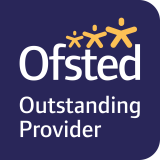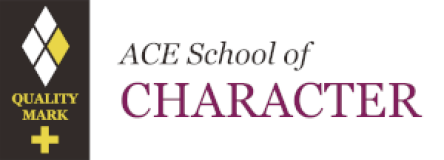The Role of a Governor
Governance at Barking Abbey School
The purpose of governance
The purpose of governance is to provide confident and strong strategic leadership which leads to robust accountability, oversight and assurance for educational and financial performance.
All governance boards, no matter what type of school or how many schools they govern, have three core functions:
• Ensuring clarity of vision, ethos and strategic direction;
• Holding executive leaders to account for the educational performance of the organisation and its pupils, and the effective and efficient performance management of staff; and
• Overseeing the financial performance of the organisation and making sure its money is well spent.
The key features of effective governance
Boards must be ambitious for all children and young people and infused with a passion for education and a commitment to continuous school improvement that enables the best possible outcomes. Governance must be grounded in reality as defined by both high-quality objective data and a full understanding of the views and needs of pupils/students, staff, parents, carers and local communities. It should be driven by inquisitive, independent minds and through conversations focussed on the key strategic issues which are conducted with humility, good judgement, resilience and determination.
Effective governance is based on six key features:
-
Strategic leadership that sets and champions vision, ethos and strategy.
-
Accountability that drives up educational standards and financial performance.
-
People with the right skills, experience, qualities and capacity.
-
Structures that reinforce clearly defined roles and responsibilities.
-
Compliance with statutory and contractual requirements.
-
Evaluation to monitor and improve the quality and impact of governance.
1. Strategic leadership that sets and champions vision, ethos and strategy through:
- a clear and explicit vision for the future set by the board, in collaboration with executive leaders, which has pupil progress and achievement at its heart and is communicated to the whole organisation;
- strong and clear values and ethos which are defined and modelled by the board, embedded across the organisation and adhered to by all that work in it, or on behalf of it;
- strategic planning that defines medium to long-term strategic goals, and development and improvement priorities which are understood by all in the organisation;
- processes to monitor and review progress against agreed strategic goals and to refresh the vision and goals periodically and as necessary including at key growth stages or if performance of the organisation drops;
- mechanisms for enabling the board to listen, understand and respond to the voices of parents/carers, pupils, staff, local communities and employers;
- determination to initiate and lead strategic change when this is in the best interests of children, young people and the organisation, and to champion the reasons for, and benefits of, change to all stakeholders;
- procedures for the board to set and manage risk appetite and tolerance; ensuring that risks are aligned with strategic priorities and improvement plans and that appropriate intervention strategies are in place and embedding risk management at every level of governance; and
- an informed decision on whether to form, join or grow a group of schools which is underpinned by robust due diligence and an awareness of the need to review the effectiveness of governance structures and processes if and when the size, scale and complexity of the organisation changes.
2. Accountability that drives up educational standards and financial health through:
- rigorous analysis of pupil progress, attainment and financial information with comparison against local and national benchmarks and over time;
- clear processes for overseeing and monitoring school improvement and financial health, providing constructive challenge to executive leaders;
- a transparent system for performance managing executive leaders, which is understood by all in the organisation, linked to defined strategic priorities;
- effective oversight of the performance of all other employees and the framework for their pay and conditions of service;
- a regular cycle of meetings and appropriate processes to support business and financial planning; and
- effective controls for managing within available resources and ensuring regularity, propriety and value for money.
3. People with the right skills, experience, qualities and capacity who:
- understand the purpose of governance and the role of non-executive leadership and have all the necessary skills, as outlined in the department’s Competency frameworks: for governance and professional clerking, to deliver it well;
- include an effective chair and vice-chair with the ability to provide visionary strategic non-executive leadership;
- provide sufficient diversity of perspectives to enable robust decision making;
- are recruited through robust and transparent processes against a clear articulation of required skills which are set out in a role specification;
- use active succession planning to ensure the board, and the whole organisation, continues to have the people and leadership it needs to remain effective; and
- employ a professional clerk to provide expert advice and guidance and to ensure the efficient and compliant operation of the board.
4. Structures that reinforce clearly defined roles and responsibilities through:
- appropriate board and committee structures that reflect the scale and structure of the organisation and ensure sufficient and robust oversight of key priorities;
- clear separation between strategic non-executive oversight and operational executive leadership which is supported by positive relationships that encourage a professional culture and ethos across the organisation;
- processes for ensuring appropriate communication between all levels and structures of governance and to pupils/students, parents/carers, staff and communities – particularly to ensure transparency of decision-making; and
- published details of governance arrangements including the structure and remit of the board and any committees which is understood at all levels of governance and leadership and is reviewed regularly.
5. Compliance with statutory and contractual requirements, through:
- awareness of, and adherence to, responsibilities under education and employment legislation
- plans to ensure that key duties are undertaken effectively across the organisation such as safeguarding, inclusion, special education needs and disability (SEND), and monitoring and oversight of the impact of pupil premium and other targeted funding streams; and
- understanding of, and adherence to, responsibilities under the Equalities Act, promoting equality and diversity throughout the organisation including in relation to its own operation.
6. Evaluation to monitor and improve the quality and impact of governance through:
- regular skills audits, aligned to the organisation’s strategic plan, to identify skill and knowledge gaps and which both define recruitment needs and inform a planned cycle of continuous professional development (CPD) activity including appropriate induction for those new to governance or to the board;
- processes for regular self-evaluation and review of individuals’ contribution to the board as well of the board’s overall operation and effectiveness;
- commissioning external reviews of board effectiveness, particularly at key growth or transition points, to gain an independent expert assessment of strengths and areas for development; and
- documentation which accurately captures evidence of the board’s discussions and decisions as well as the evaluation of its impact and which complies with legal requirements for document retention.







